10 Postcard Views Of Fifth Avenue From 31st -59th Street
 Let’s have a look at ritzy Fifth Avenue. All the postcards depict scenes from about 1900 – 1935. Fifth Avenue has a long association with wealth and privilege. Several of these postcards capture the shifting tide of commercial intrusion into a neighborhood once dominated by private residences.
Let’s have a look at ritzy Fifth Avenue. All the postcards depict scenes from about 1900 – 1935. Fifth Avenue has a long association with wealth and privilege. Several of these postcards capture the shifting tide of commercial intrusion into a neighborhood once dominated by private residences.
As we look over the avenue, the one thing you will notice is how much traffic, both pedestrian and vehicular, increased after the 1920’s. We’ll start south and work our way north.
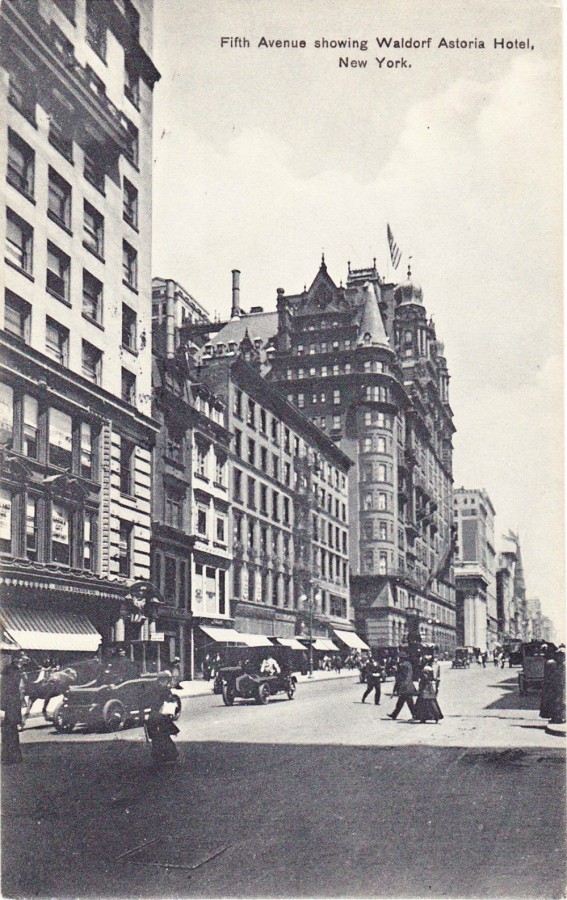 This photo postcard taken around 1915 is looking north on Fifth Avenue from 32nd Street. The turreted Waldorf-Astoria Hotel with its American flag raised on the roof is the focal point of this scene. There are no traffic signals to interrupt the vehicular traffic on the avenue. People cross the street with little difficulty as the traffic is light.
This photo postcard taken around 1915 is looking north on Fifth Avenue from 32nd Street. The turreted Waldorf-Astoria Hotel with its American flag raised on the roof is the focal point of this scene. There are no traffic signals to interrupt the vehicular traffic on the avenue. People cross the street with little difficulty as the traffic is light.
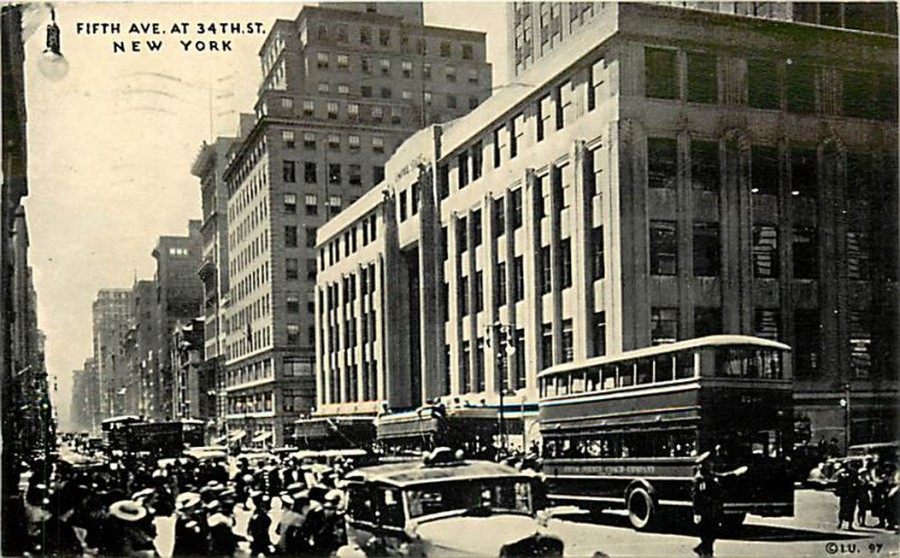 In just 20 years Fifth Avenue has changed dramatically. Looking south on Fifth Avenue from 34th Street in 1935, the Waldorf-Astoria is gone and the Empire State Building is in its place. The Empire State is directly behind the double deck Fifth Avenue bus. Pedestrian and vehicular traffic is substantial and in front of the bus a policeman deals with the congestion.
In just 20 years Fifth Avenue has changed dramatically. Looking south on Fifth Avenue from 34th Street in 1935, the Waldorf-Astoria is gone and the Empire State Building is in its place. The Empire State is directly behind the double deck Fifth Avenue bus. Pedestrian and vehicular traffic is substantial and in front of the bus a policeman deals with the congestion.
 From around 1926 we switch the view around to look north from 34th Street. The building in the foreground is the mutilated Knickerbocker Trust Company. The ornate original three story building at 358 Fifth Avenue, designed by McKim, Mead & White was altered in 1921 with a 10 story addition (seen here) and completely renovated to its current mundane state in 1958. The large structure in the middle of the street at the bottom of the postcard is one of the first traffic signal control towers in New York City.
From around 1926 we switch the view around to look north from 34th Street. The building in the foreground is the mutilated Knickerbocker Trust Company. The ornate original three story building at 358 Fifth Avenue, designed by McKim, Mead & White was altered in 1921 with a 10 story addition (seen here) and completely renovated to its current mundane state in 1958. The large structure in the middle of the street at the bottom of the postcard is one of the first traffic signal control towers in New York City.
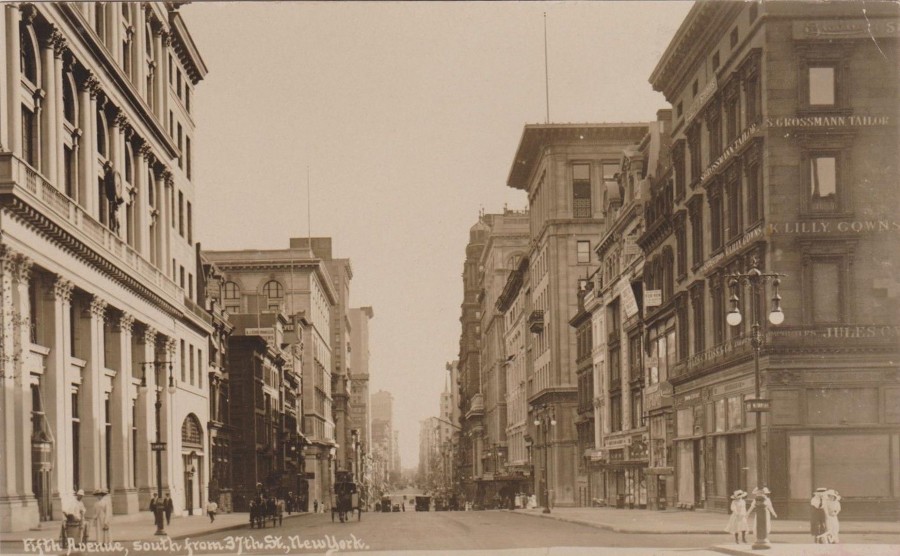 From around 1903, Fifth Avenue is lightly trafficked looking south from 37th Street. In this remarkably clear photo postcard, in the lower left corner we see a “white wing” one of New York’s sanitation workers, who appears to be chatting with a well dressed lady. Across on the west side of the street four young women are walking north having just passed Jules K. Weiss & Co. whose tailoring establishment can be seen on a sign directly behind the street lamp. All the visible vehicular traffic is horse drawn.
From around 1903, Fifth Avenue is lightly trafficked looking south from 37th Street. In this remarkably clear photo postcard, in the lower left corner we see a “white wing” one of New York’s sanitation workers, who appears to be chatting with a well dressed lady. Across on the west side of the street four young women are walking north having just passed Jules K. Weiss & Co. whose tailoring establishment can be seen on a sign directly behind the street lamp. All the visible vehicular traffic is horse drawn.
 From about 1927 this view of Fifth Avenue looking north from 41st Street shows a bustling metropolis. A traffic signal tower is set up at the intersection of 42nd and Fifth. On the west side (left) is the former Hotel Bristol, converted to the Bristol Building in 1903. It was demolished in 1929 to make way for the art deco skyscraper, 500 Fifth Avenue.
From about 1927 this view of Fifth Avenue looking north from 41st Street shows a bustling metropolis. A traffic signal tower is set up at the intersection of 42nd and Fifth. On the west side (left) is the former Hotel Bristol, converted to the Bristol Building in 1903. It was demolished in 1929 to make way for the art deco skyscraper, 500 Fifth Avenue.
 In a similar view also from around 1927, at a higher vantage point, we are looking up Fifth Avenue north from 42nd Street. Vehicular traffic flows both ways as crowds throng the sidewalks. On the west side of the street can be seen the steeple of St. Thomas Episcopal Church. Beyond the church, the last building visible before the southern tip of Central Park is the Plaza Hotel.
In a similar view also from around 1927, at a higher vantage point, we are looking up Fifth Avenue north from 42nd Street. Vehicular traffic flows both ways as crowds throng the sidewalks. On the west side of the street can be seen the steeple of St. Thomas Episcopal Church. Beyond the church, the last building visible before the southern tip of Central Park is the Plaza Hotel.
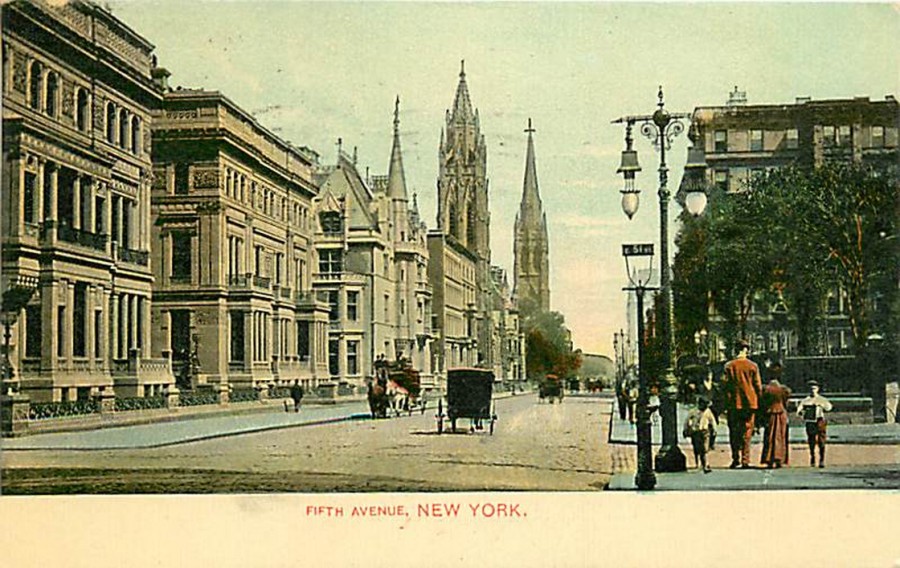 Fifth Avenue looking north from 51st Street around 1900. A newsboy stands on the corner as a couple passes by on a mostly deserted thoroughfare. The triple palaces of the Vanderbilt’s stand between 51st and 52nd Streets and the northwest corner of 52nd Street. The first two mansions were given to his daughters by William Henry Vanderbilt, the third on 52nd Street was the home of William K. Vanderbilt. By 1945 all three mansions were gone; victims of changing tastes, expenses, and the rising value of real estate. The churches in the background are St. Thomas Episcopal Church and the Fifth Avenue Presbyterian Church.
Fifth Avenue looking north from 51st Street around 1900. A newsboy stands on the corner as a couple passes by on a mostly deserted thoroughfare. The triple palaces of the Vanderbilt’s stand between 51st and 52nd Streets and the northwest corner of 52nd Street. The first two mansions were given to his daughters by William Henry Vanderbilt, the third on 52nd Street was the home of William K. Vanderbilt. By 1945 all three mansions were gone; victims of changing tastes, expenses, and the rising value of real estate. The churches in the background are St. Thomas Episcopal Church and the Fifth Avenue Presbyterian Church.
 From this 1920 postcard we see Fifth Avenue looking north from 56th Street on a busy Sunday morning. With the exception of one horse drawn carriage going north in the foreground all the other vehicular traffic is motorized. The large private house on the left just before Central Park is the monumental home of Cornelius Vanderbilt II, taking up the block between 57th and 58th Streets. This “chateau” was demolished in 1926 and luxury department store, Bergdorf Goodman was built on the site.
From this 1920 postcard we see Fifth Avenue looking north from 56th Street on a busy Sunday morning. With the exception of one horse drawn carriage going north in the foreground all the other vehicular traffic is motorized. The large private house on the left just before Central Park is the monumental home of Cornelius Vanderbilt II, taking up the block between 57th and 58th Streets. This “chateau” was demolished in 1926 and luxury department store, Bergdorf Goodman was built on the site.
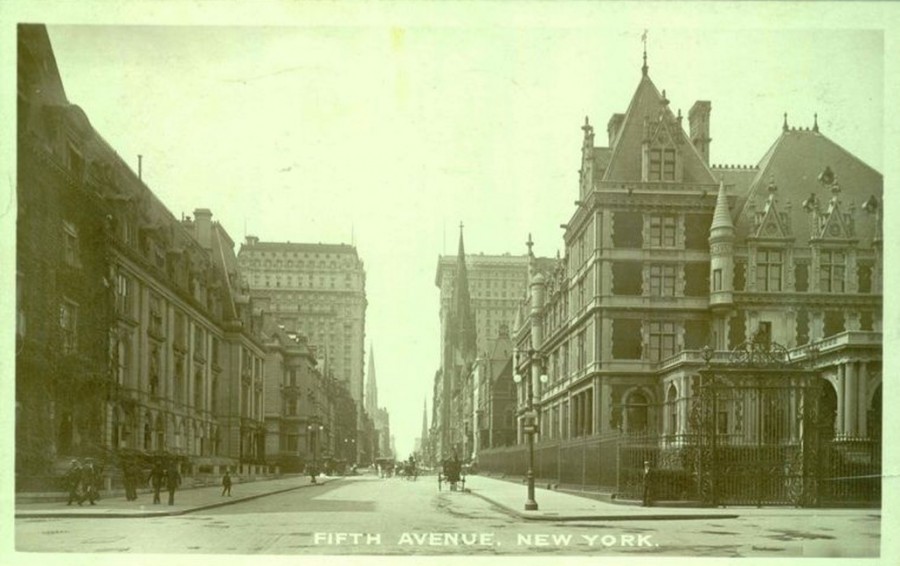 Looking south along Fifth Avenue from 58th Street, the opulence and grandeur of the Cornelius Vanderbilt II mansion can be better viewed in this postcard which shows just a portion of the huge house. Seen here in 1905, Fifth Avenue below Central Park is filled with low profile buildings, mostly mansions and churches. There are two visible exceptions to those low buildings: on the east (left) side of Fifth Avenue and 55th Street, the 18 story St. Regis Hotel, completed in 1904. And directly across the street is the Gotham Hotel, which opened in 1905 and was considered just a tad less prestigious than its cross the street neighbor. In 1979 the Gotham began an eight year $200 million renovation. It was renovated again in 1998 and rechristened as the Peninsula Hotel. In 1916 a single room at the Gotham with shower and bath was $2.50 and a suite of rooms was $12.00. Today a one night stay at the Peninsula starts at $595. That sounds pretty prestigious to me.
Looking south along Fifth Avenue from 58th Street, the opulence and grandeur of the Cornelius Vanderbilt II mansion can be better viewed in this postcard which shows just a portion of the huge house. Seen here in 1905, Fifth Avenue below Central Park is filled with low profile buildings, mostly mansions and churches. There are two visible exceptions to those low buildings: on the east (left) side of Fifth Avenue and 55th Street, the 18 story St. Regis Hotel, completed in 1904. And directly across the street is the Gotham Hotel, which opened in 1905 and was considered just a tad less prestigious than its cross the street neighbor. In 1979 the Gotham began an eight year $200 million renovation. It was renovated again in 1998 and rechristened as the Peninsula Hotel. In 1916 a single room at the Gotham with shower and bath was $2.50 and a suite of rooms was $12.00. Today a one night stay at the Peninsula starts at $595. That sounds pretty prestigious to me.

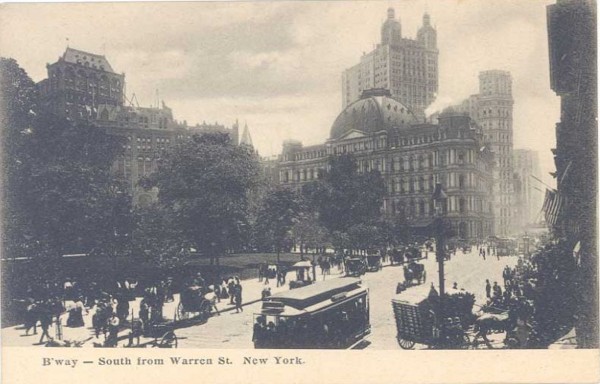

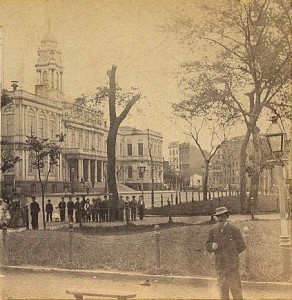
Good afternoon
I’m Giuseppe Cosentino phd student of faculty of architecture in
Florence.
My pdh dissertation concern about the exposition of Olivetti’s
showrooms, amazing example of synthesis between art ad architecture.
With the help of my tutor prof. Paolo Zermani, I fixed particular
attention about the Olivetti’s showroom in New York designed by B.B.P.R
and the artist Costanino Nivola.
I would like to know if I could receive the 1927 black and white postcard in high resolution.
Thank you for your help in this matter.
Best regards